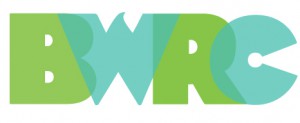TITLE V PROJECT: THE SECOND YEAR EXPERIENCE
Faculty Member: Marie C. Montes-Matías
Proposed course: Microbiology Laboratory (Bio 3302L)
PROJECT DESCRIPTION
The proposed project intends to utilize the Brooklyn Waterfront as an experimental laboratory. Through this project students will get a better perspective on the bacterial diversity in our environment and their abundance on our ecosystem. The activity will be designed to supplement the current syllabus for the Microbiology Laboratory. Experimental part will take at least two weeks. This activity will also expose students to environmental issues and the impact that contamination has in our environment.
Week 1: Sample collection and serial dilutions. Students will be subdivided into different groups. Class will travel to the river to collect samples from different locations. This exercise will combine math and science skills. After sample collection, students will perform the traditional microbiology technique serial dilutions. Different concentrations of samples will be plated in LB agar and incubated for 24-48h, which allow the approximation of number of cells in a sample. This activity will allow students to quantify the approximate number of bacterial cells in the ecosystem. In order to supplement this exercise, students will also utilize a Spectrophotometer as an analytical instrument to approximate the number of bacterial cells in a sample measuring turbidity.
Week 2: Bacterial plate count and identification testing. Plated samples will be quantified. After quantification, different cells will be selected for analysis under the microscope. Bacterial Gram Stain will be performed for basic cell identification and concepts like shape and number will be addressed. This activity will allow students to identify different bacteria in the sample and the diversity of the ecosystem.
High Impact Practices
Undergraduate research
Collaborative assignments and projects
GenEd competencies
Knowledge development from range of interdisciplinary perspectives: Through experimentation of their own environment, students will be able to apply the knowledge acquired in the classroom to different areas of the real world. They will be exposed to different disciplines, such as, Microbiology, Math, and Environmental Science.
Inquiry/ Analysis: Students will be exposed to data collection and analysis, which will help students employ scientific reasoning skills and logical thinking.
Community Engagement: Exposure to different environmental issues and raise awareness of the importance of environmental conservation.
Communication: Students will have the opportunity to communicate their results through scientific writing and to orally present their results.
Assessment
Assessment for this project will involve different phases. Prior to the experimental part, students will be asked to generate a hypothesis (their results expectations) . After the experimental part, students will be asked to write a scientific report to communicate their findings. In addition, students will have the opportunity to engage in oral presentations to communicate their results and provide an interpretation of their findings.




